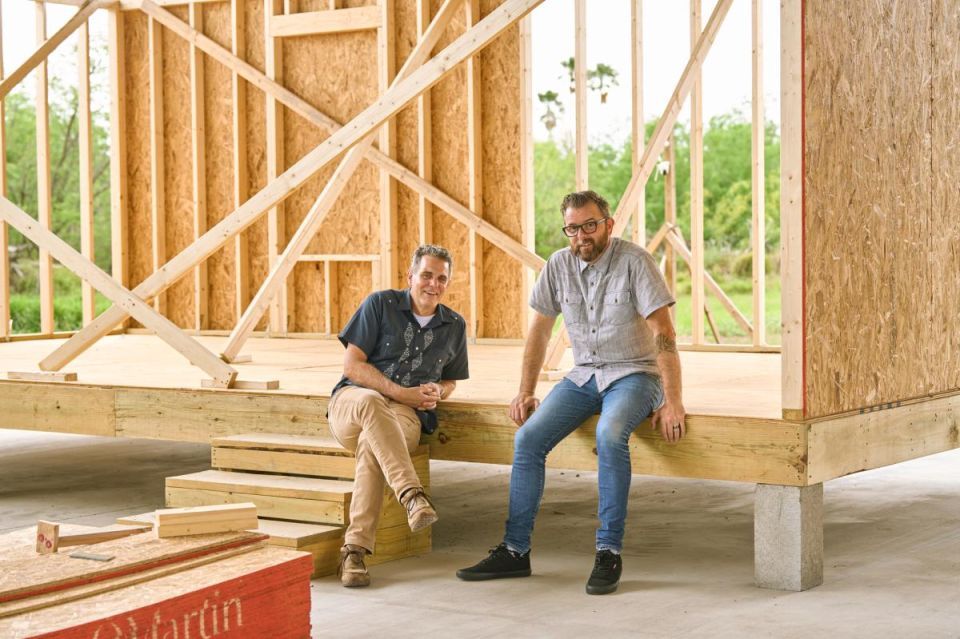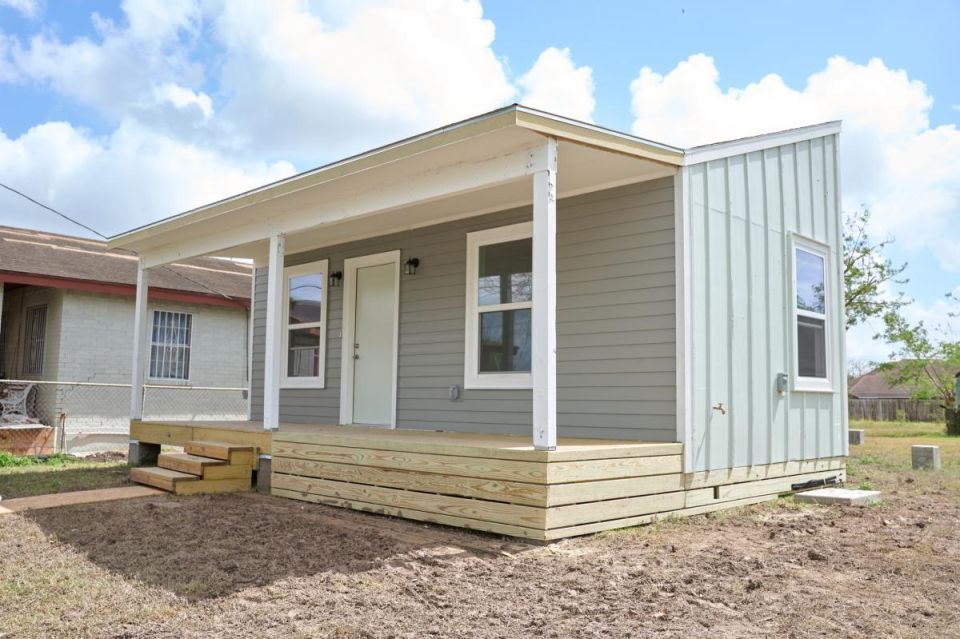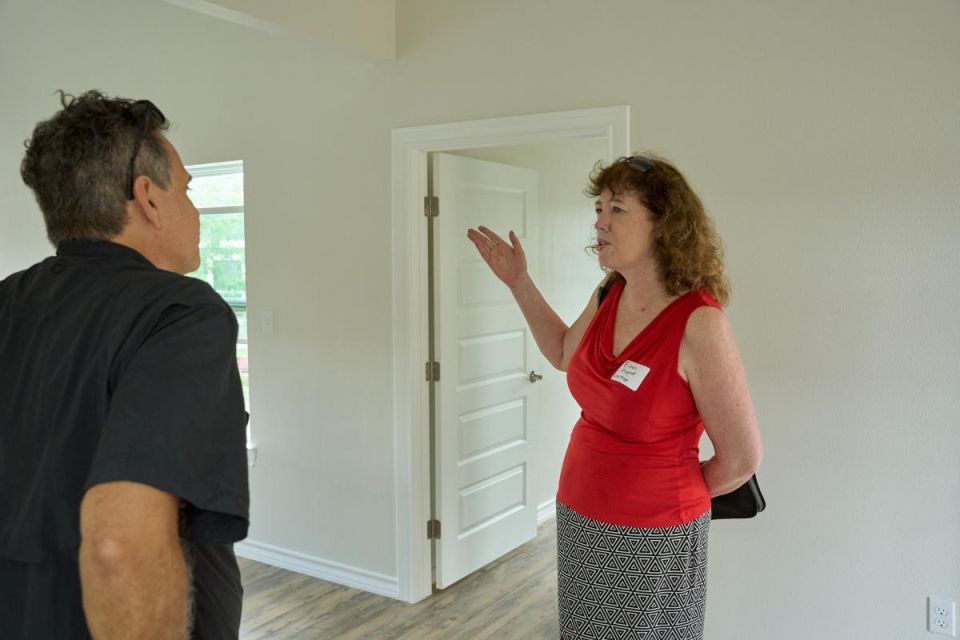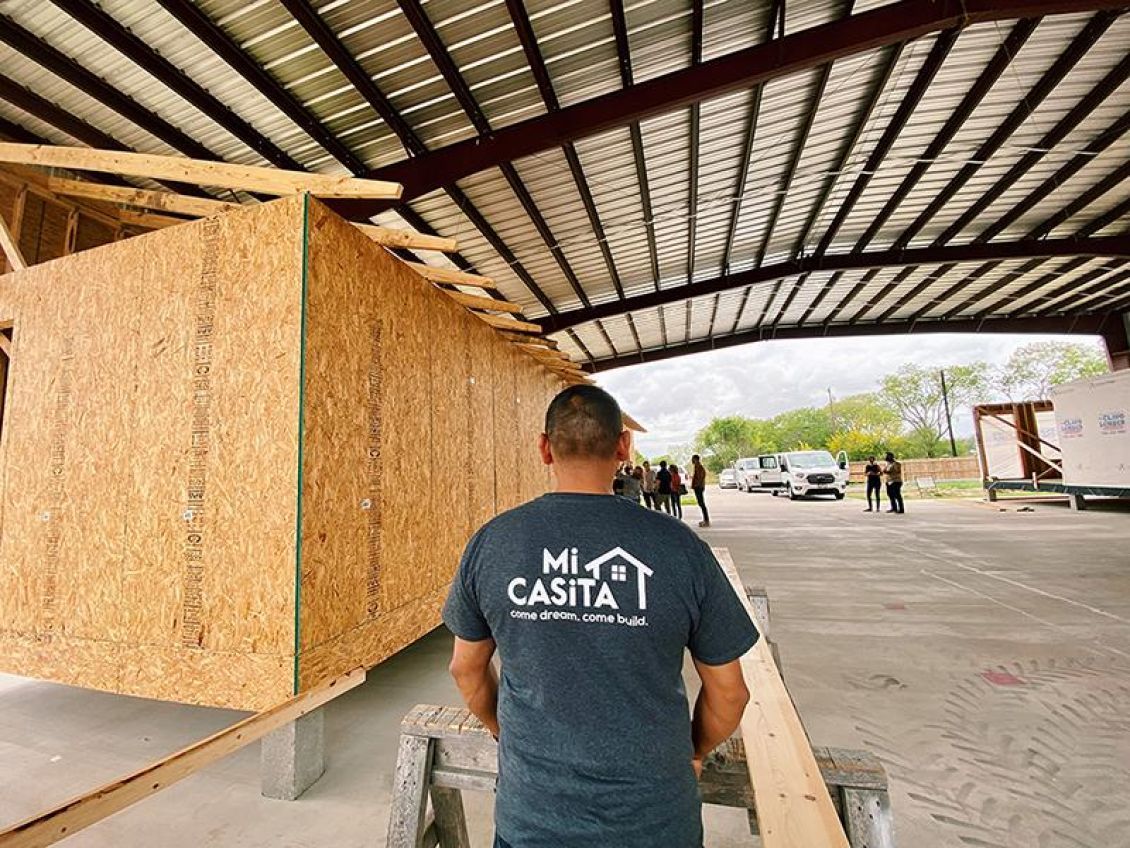While homeownership rates may be higher in rural communities, growing numbers of families in sparsely populated regions struggle in the face of a limited supply of homes, rising costs and more frequent climate disasters.
In Brownsville, Texas, cdcb | come dream. come build. has met the crisis with a sustainable, disaster-resilient modular housing innovation that allows families to purchase as much home as they can afford. Called MiCASiTA, it is one of six winning ideas that earned a $2.5 million award from the Housing Affordability Breakthrough Challenge, led by Enterprise Community Partners with support from Wells Fargo.
It’s the second and final year of the Breakthrough Challenge, and already cdcb has constructed the manufacturing plant – a barn-like structure they call “the farm” – and grown their first MiCASiTA home. cdcb Executive Director Nick Mitchell-Bennett shares why choice is at the heart of MiCASiTA – and what this innovation could mean for America’s rural communities and Tribal nations.
Q: How did Brownsville, Texas, become home for you?
Nick: I moved to the [Rio Grande] Valley in 1991, right after college. I was invited to run a small nonprofit that did housing rehab work, and fell in love with the place and stayed. It's the furthest south in the continental United States, right on the U.S.-Mexico border. It's really poor. But it's a place of imagination, of growth, of resiliency. The families who live here believe in the American dream, whether they were born here or immigrated here, whether from up north or from down south. It's a place born out of conflict. But for those who are from here and call this home, it's a place to really become part of, to live and learn and raise a family. And I love being here.
Q: What is MiCASiTA solving for?
Nick: We believe MiCASiTA is the answer to homeownership for low-income families living in rural colonias areas. The need for affordable homes is massive and it’s not just here, along the border. It’s in the Mississippi Delta, on Tribal lands, in California’s Central Valley – in all the persistent poverty locations across the country. And so we've got to do this better – with more beauty, affordability and productivity.
Modular housing built off-site on our farm is our answer to that. It's building in 288-square-foot boxes that we can put together any way you choose, up to 1,400 square feet total. One box is built and set down in 30 days. Within 60 days, a family has its house and they feel like they’re buying something totally for them – they designed the house, chose the colors, the faucets, the flooring. For them, no other house in the world looks like this house. And it’s theirs.
We’re controlling the system, so it’s more efficient and we can build the boxes faster and make them more affordable. And our mortgage product allows families with lower incomes to grow their home as their finances improve.,

Q: Effective partnerships are key across all six Breakthrough Challenge innovations. Your team works hand in hand with the Texas-based design center BuildingCommunityWORKSHOP (bc), led by Executive Director Benje Feehan. How did that partnership begin and why is it so successful?
Nick: We started working together in 2011 when bcWORKSHOP did the design for our first 9 percent tax credit development. We found out we had the same philosophy on community-driven approaches. We said, “Hey, this is working. Let’s do another one.” And it was way too much fun to stop. It’s fun because we push each other. We like to get things done. And they develop beautiful buildings. And that has allowed us to get things done that are gorgeous and accepted by the community.
There are pieces of MiCASiTA that only we can do, and there are pieces that only they can do. But nothing is binary and we draw on the skill sets of all team members to come together and understand what all the pieces do and how they’ll work. That's how we work together.
Q: A key feature of MiCASiTA is an app you’ve built to give families a stake in the design of their homes and shows how their choices affect cost. What makes that innovative?
Nick: Ensuring people have choices is not innovative. It’s what we all should be doing. I grew up relatively low income. As a young child, my mother, brother and I moved around from apartment to apartment. No one ever asked us where we wanted to live or go to school. With MiCASiTA, people use an app called Choice Empowers to choose where they want their bedroom in their house or how many sinks to put in their bathroom. If they choose two sinks, it’s going to cost more. That’s the understanding.
As housing designers, homebuilders and finance companies, we aren’t going to change the world this way. But what we can do is help grow power by giving people more choice.

Q: You’ve held summits to introduce groups from across the country to MiCASiTA. How important is it for you to see your innovation replicated?
Nick: Any good idea worth doing is worth scaling – especially in rural areas where there is persistent poverty and the need is so great. That’s not to cut anybody out. But our focus is on rural. We’ve talked to friends across the country in in Appalachia, the Mississippi Delta, Indian country. We’ve said we’ve got this idea. You want to take a look at it? We're not trying to sell anything to anybody, but if they need the help and they want this process, we're willing to move it to their location. And the acceptance has been phenomenal.
What's really exciting is other folks seeing the value in it. We started both our summits with full transparency, saying: "We are six months too early to be having these conversations. We are sharing with you where we are at today. And there's a lot that we still don't know." And still people see it making sense in their geographies, in their regions, with their clients. And that's been validating. I’ve also met with our county commissioners, and they were really excited to hear what we were doing – not just on the housing side, but that we're also creating jobs and better land use policies.

Q: What impact did the Breakthrough Challenge and your cohort experience have on your early success with MiCASiTA?
Nick: Without the Breakthrough Challenge, there's no way we'd be here at this stage. After a rigorous selection process, Wells Fargo and Enterprise said, here's $2.5 million. You’ve got two years to show us what you can do. And that's exactly what folks like Benje and I need. We need the money and we need someone to give us a deadline to get it done. And when you give us those two things, we'll go for it. The Enterprise and Wells Fargo team together has really allowed us to utilize the funding and the expertise that they bring to move this forward.
Enterprise’s role has been very much like Wells Fargo's in that they trusted us. And they've given us time, expertise and other resources. They’re always answering our questions, helping us talk to the right people and making sure we’re in the right meetings. From the start, it’s never been about Enterprise or Wells Fargo – or cdcb or bc. It’s about these houses and the people who are going to be able to buy them. You can't ask for a better partner than that.
